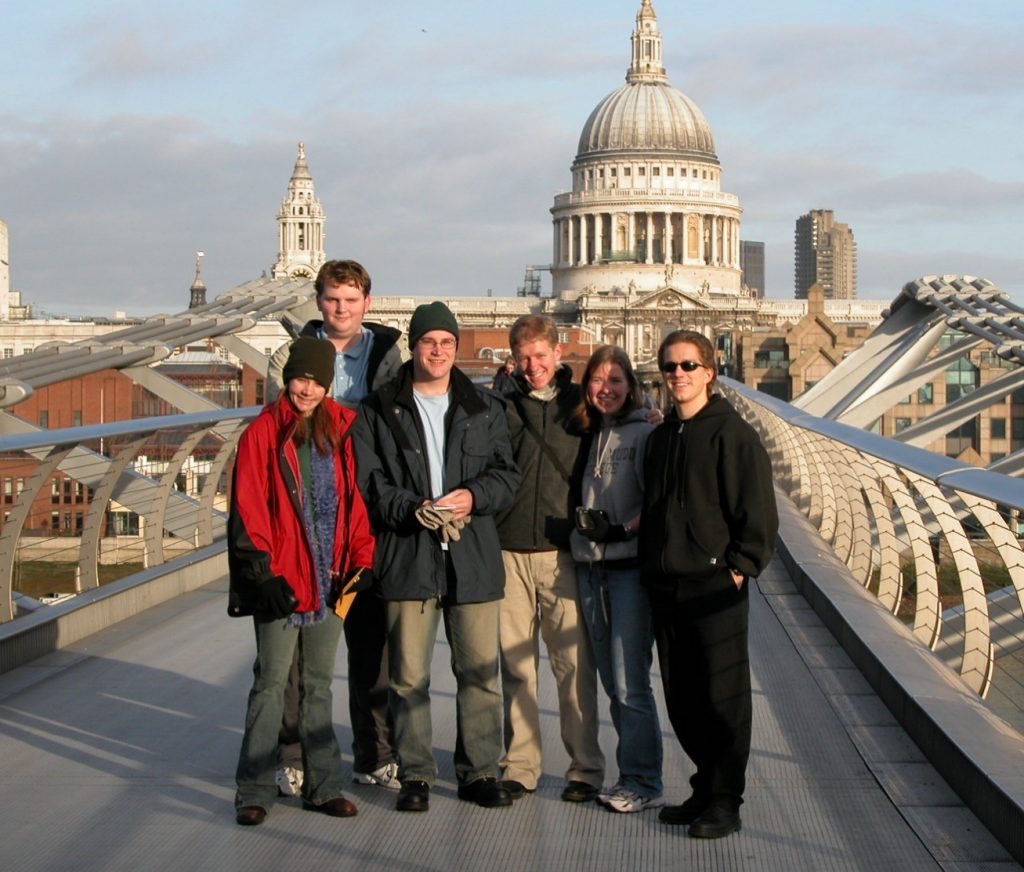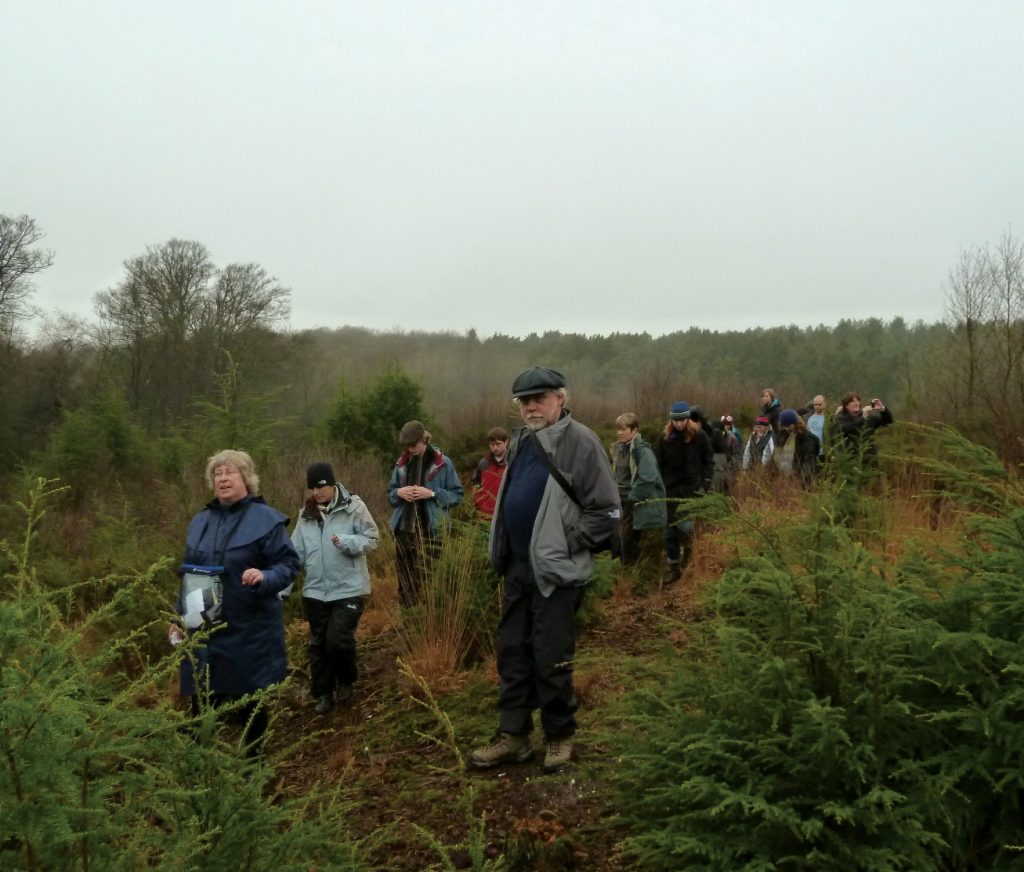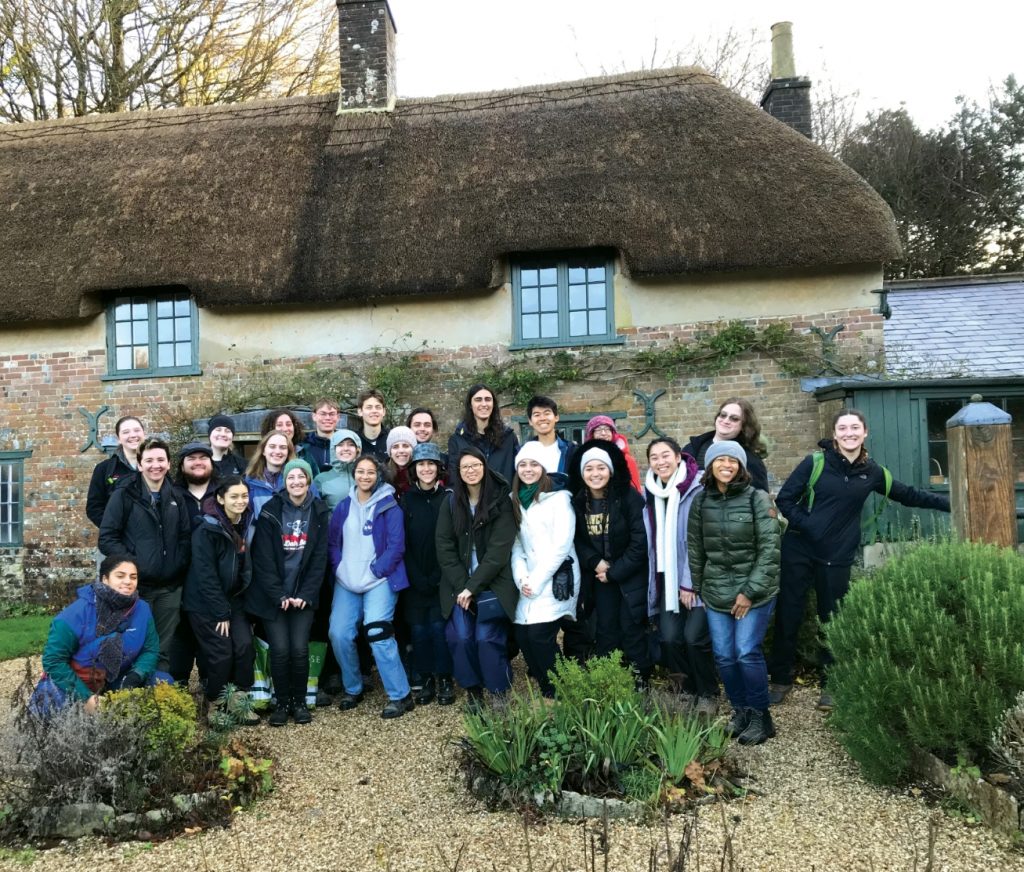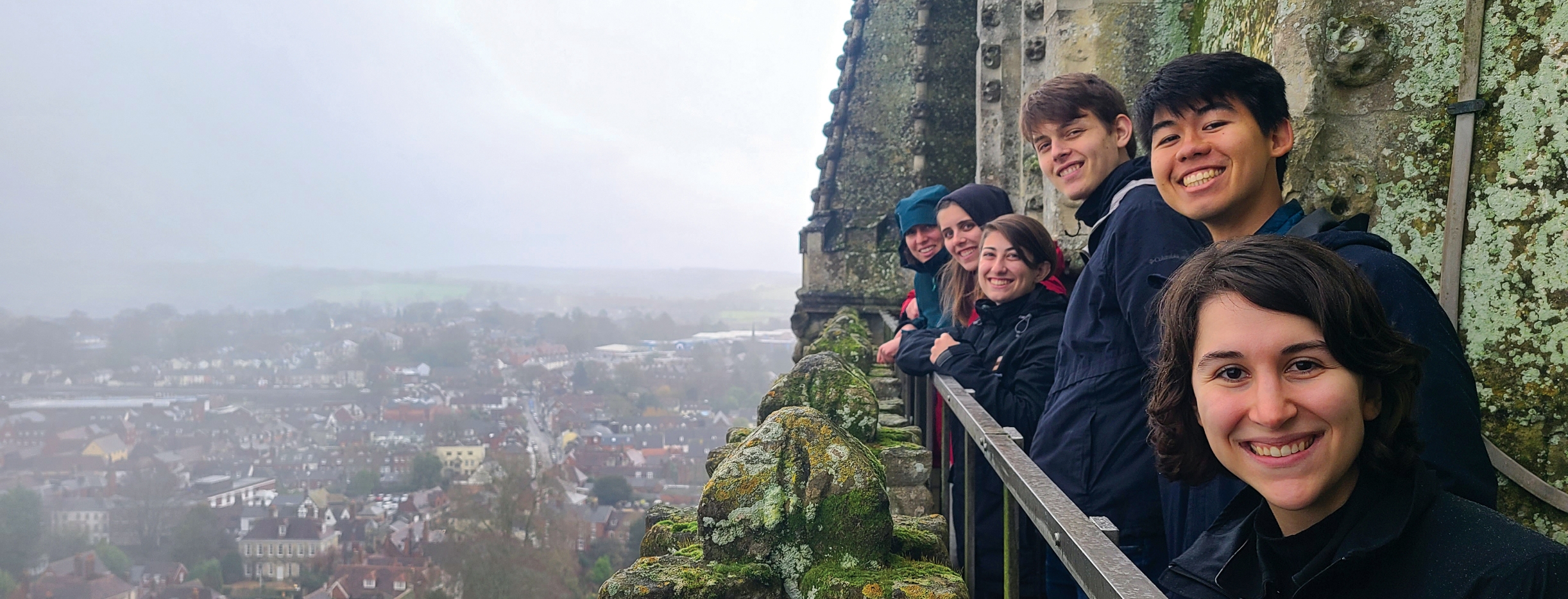Touring with Class
A class built on collaboration, Victorian Age authors and adventure concludes after more than two decades
An interdepartmental adventure that began as an experiment blending travel and literature has concluded after 23 years—but not before impacting the lives of 270 participants, including 233 students as well as parents, siblings, faculty, staff, alums, trustees and friends of the College, and demonstrating the success and importance of academic collaboration.
Professors Jim Eckert (physics) and Jeff Groves (literature) began in the late 1990s to create a course that combined the literature of Charles Dickens and Thomas Hardy with the history of Victorian England. They first offered Dickens, Hardy, and the Victorian Age (Literature 117) in fall 2000. The course, which covered six novels and featured extensively researched group presentations, was followed by a two-week study tour to England, during which two additional novels and some poetry were discussed.

Dickens-Hardy participants on Millennium Bridge in 2005.
For the study tour, Eckert and Groves arranged tours at sites associated with Dickens in London (the first week) and at Hardy-related sites in Dorset (the second week). The professors worked with a tour company for the first trip but subsequently found it more affordable if they arranged the tours, accommodations, local travel and activities themselves. They also managed to raise funds for the class from alumni and from students’ families and other donors, and they worked with the Office of Financial Aid to help defray the cost of the tour for many participating students.
Participants traveled in January to England where they visited many sites related to the texts they’d read to experience the authors’ sense of place. Annual stops included Lincoln’s Inn, Rochester Castle, Hardy’s birthplace and Egdon Heath. Also included were other sites of general interest, like Stonehenge, Avebury, Salisbury Cathedral and Maiden Castle, the largest Iron Age hillfort in Britain. For some participants, like Daniel Halperin ’06 (CS/math), it was their first trip abroad.
“There are talkers enough among us; I’ll be one of the doers.”CHARLES DICKENS, BARNABY RUDGE
“The trip was transformative for me personally in many ways,” says Halperin, who traveled during 2005 and has been an ardent supporter of the class and of HMC study abroad in general. He recalls his HMC experience being sheltered. “Living in dorms, not cooking your own food, not cleaning your own bathroom or even really planning your activities. Once we got [to England], it was a huge step up in independence and a confidence boost when we succeeded. The professors set us up for success by having a London-wide scavenger hunt/race on the first day where we had to find Dickensian sites and navigate around them, forcing us to plan and to get familiar with maps, walking, Tubeing and even taxis.”
Halperin’s group reported on “Time, Speed and Distance” during the on-campus portion of the course, but students also gave presentations in England. Aech Loar ’24 (chemistry, literature), one of 24 students who attended the January 2023 trip, gave their report on the topic of “rural life in the Victorian era.” “For our site report, we visited three churches in Dorset that Hardy had some affiliation with and gave a small report on each of them,” Loar says.
“Though a good deal is too strange to be believed, nothing is too strange to have happened.”THE PERSONAL NOTEBOOKS OF THOMAS HARDY
Arianna Meinking ’24 (IPS), also a member of this year’s trip, reported about science and religion during the authors’ time in front of the Natural History Museum. “We focused on geology and evolution, which were new scientific fields in the Victorian era,” she says.

Dorset guide Catherine Phillips leads Harvey Mudd participants through Hardy’s “Egdon Heath” in 2011.
In addition to students, others also enjoyed the class and the tour when space allowed. Eckert recalls that alumni from nearly every HMC decade, many of whom had lived abroad for many years, were able to participate in the alumni dinner in London that was part of almost every tour before the pandemic. In addition to HMC faculty from chemistry, computer science, mathematics, physics and engineering, three retirees from Claremont’s Mount San Antonio Gardens attended, as did staff members Kim Young (chemistry) and Elizabeth Hodas (computing information services), who took the trip with her college-age daughter in 2019.
“I was only intending to audit the class, but one of the student groups was one person short, so I volunteered to work with them,” says Hodas. “Our topic was ‘rural life.’ During the fall, I met with the students regularly as we prepared for our in-class presentation. It was wonderful to get to know them better. During the trip in the spring, we continued to meet to prepare for our presentation in Dorchester, where we talked about the Tolpuddle Martyrs, right from the witness box in the actual courtroom where they were tried. That was probably one of the most memorable parts of the trip!”
“Life is made of ever so many partings welding together.”DICKENS, GREAT EXPECTATIONS
Professors and participants have plenty of memorable stories to share: from being stranded on the bus due to severe weather to spelling “HMC” with shadows in Hardy’s countryside to climbing the bell tower of Salisbury Cathedral to sunrises at Stonehenge to—most recently—navigating pandemic-related closures and cancellations (There was no trip in 2021.). Professors Groves and Eckert count these as memorable moments too, but they most appreciate the extra time spent with students.
Eckert says, “In the 16 days, which includes travel days, we have more contact hours with students than in the 15 weeks on campus, and it’s very personal contact. You’re sitting at a meal chatting, laughing with your students. It shows us in a very different light, and it shows them in a very different light. I will miss that a lot, and I wish there were more of that on offer.”
The study tour really plays to the collaborative student ethos at Mudd,” Groves adds. “You see students form a really cohesive group and take care of each other.”
Groves, Louisa and Robert Miller Professor of Humanities and former department chair (HSA), chair of the faculty and VP/dean of the faculty, will enter phased retirement next summer after 35 years at HMC. Eckert is entering his 43rd year of physics research and teaching. The duo will end this chapter of their teaching careers, but they hope that by sharing the success of Dickens, Hardy, and the Victorian Age, interdepartmental collaboration will grow.
“It’s been a lot of fun for us to work together. HMC faculty members don’t get too many opportunities to work across departmental borders,” says Groves, whose other interdepartmental endeavor was the environmental analysis course Building Los Angeles with Dan Petersen, professor of physics emeritus. “It’s really important for the faculty here to get to know people in other departments and build good relationships. Teaching with Jim for so many years has been a great experience.”
Eckert says, “I count myself very fortunate to have been able to teach this course with Jeff. It has been a lot of hard work but it was also one heck of a lot of fun. I am extremely proud of what we created. It’s been more than worth it.”

2023 travelers pose at Hardy’s Cottage.
